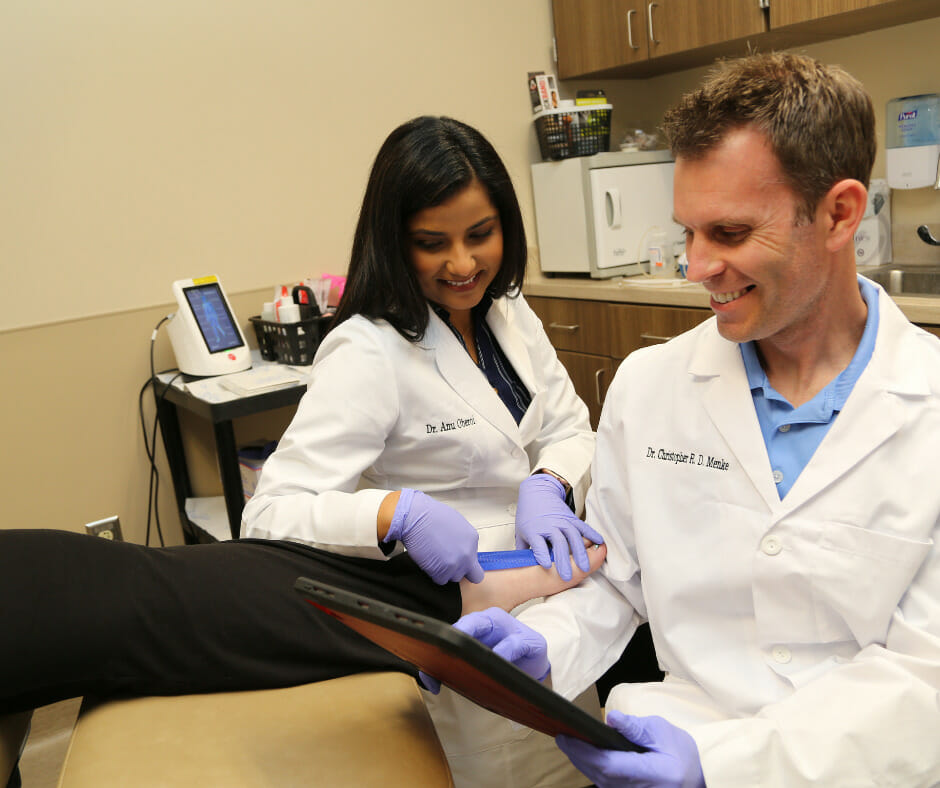Most people instinctively know when it’s time to go to their family Doctor or bring their child to one. Whether it be a high fever or abnormal aches and pains, we are all quick to recognize when it’s time to make an appointment.
However, fewer people are aware of the signs that suggest they would benefit from an appointment with a foot specialist. Here are some tell-tale signs that it’s time for you to set up an appointment with one of our Doctors at 26 Foot and Ankle.
WHEN TO SEE A FOOT DOCTOR
- Symptoms Won’t Go Away – Most minor foot and ankle injuries hurt the most right after the incident. After the first excruciating few days, however, your pain should begin to noticeably fade away. If your pain levels remain the same, or pain gets worse as time goes on, set up an appointment with a specialist.
- A Reoccurring Case of Athlete’s Foot- It’s one of the most common fungal infections out there, and it can generally be treated with over-the-counter creams or sprays. But if the athlete’s foot keeps coming back, a Podiatrist can prescribe a more effective cream or oral medication and check for possible infection.
- Numbness, Pain, or Swelling in One Foot – Occasionally suffering from sore or swollen feet is normal (after running a long race or standing on your feet all day, for example) but sudden pain, swelling, or numbness in one foot for no apparent reason can be a sign of a serious problem and requires a trip to the doctor.
- If Every Shoe Hurts – It is time to see a Podiatrist if shoes that once always fit you well and were comfortable now hurt and sit in your closet. This could be due to any number of ailments that we can quickly determine at our office from bunions to heel spurs and Morton neuromas. Pain is a significant indicator that something needs to be addressed.
- Any Signs Of An Infection – Another sign that suggests you should visit a foot specialist is if you think you may be developing or dealing with an infection. If you recently had surgery and you’re experiencing discolored discharge, fever, or heat from the wound site, call your orthopedic surgeon immediately to determine your best course of action. Other signs that it is time to see a foot Doctor include any type of fungus or discoloration of the nails or skin around them.
- If You Have Diabetes – People with Type 1 and Type 2 diabetes are at a much higher risk for foot problems like poor circulation, nerve damage, ulcers, and infection. If you are a diabetic, you should see the Podiatrist once a year for a foot exam to help prevent these potentially dangerous problems.
- Delayed Healing – If cuts, sores, or soft tissue injuries seem to be taking a long time to heal, it’s worth considering a visit to a specialist’s office. You may be dealing with a circulatory issue or complications from another health condition like diabetes. Whenever you incur a cut or injury to the soft tissue in the foot, keep a careful eye on it making sure it heals in a timely manner.
- When Conservative Care Isn’t Working – Many foot conditions can heal on their own with conservative care treatments like physical therapy, rest, ice, elevation, and anti-inflammatory medications. However, if these options fail to provide relief, it is time to speak with a Doctor about alternative solutions including minimal incision surgery, laser therapy, and other care- plans.
Whether you are experiencing any of the symptoms above, or are interested in a routine comprehensive examination, we would love to see you here at 26 Foot and Ankle.



